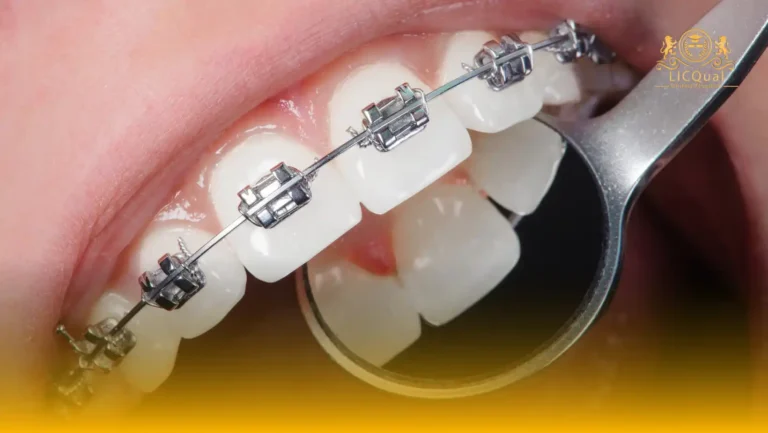Welcome to the LICQual Level 2 Award in First Aid course! This comprehensive training program is designed to equip you with advanced first aid knowledge and skills that can be applied in a wide range of emergency situations. Whether you’re an employee needing workplace certification or an individual interested in enhancing your ability to respond to medical emergencies, this course provides the essential training you need.
The LICQual Level 2 Award in First Aid is a nationally recognized qualification that empowers you to handle more complex first aid scenarios with confidence and precision. With a combination of theory and hands-on practice, you will develop the skills required to assist in situations like cardiac arrest, choking, severe bleeding, and much more.
The LICQual Level 2 Award in First Aid provides in-depth coverage of both primary and secondary first aid techniques. The course is designed to teach you life-saving skills, including CPR, the management of fractures and dislocations, and how to handle serious injuries in the workplace or home. By the end of the training, you’ll be capable of offering immediate, effective care in emergency situations, ensuring the safety and well-being of others.
Throughout the course, you will learn to manage medical emergencies such as heart attacks, strokes, burns, and respiratory issues. Our expert instructors will guide you through real-world scenarios and offer hands-on experience to ensure you’re fully prepared to act. On completion, you will be awarded the LICQual Level 2 Award in First Aid, a qualification that is recognized across various industries, making you a vital asset to your community or workplace.
Take the next step in becoming a certified first aider with the LICQual Level 2 Award in First Aid—a qualification that could save lives.
Course Overview
Qualification Title
LICQual Level 2 Award in First Aid
Total Units
6
Total Credits
6
GLH
12
Qualification #
LICQ2200045
Qualification Specification
To enroll in the LICQual Level 2 Award in First Aid, applicants must meet the following criteria:
|
Qualification# |
Unit Title |
Credits |
GLH |
|---|---|---|---|
|
LICQ2200045-1 |
Understanding the Role of the First Aider and Health & Safety |
1 |
2 |
|
LICQ2200045-2 |
Managing an Unresponsive Casualty |
1 |
2 |
|
LICQ2200045-3 |
Cardiac Arrest, CPR, and Use of an AED |
1 |
2 |
|
LICQ2200045-4 |
Managing Bleeding, Wounds, and Shock |
1 |
2 |
|
LICQ2200045-5 |
Treating Burns, Scalds, and Environmental Injuries |
1 |
2 |
|
LICQ2200045-6 |
Managing Fractures, Sprains, Strains, and Medical Emergencies |
1 |
2 |
By the end of this course, learners will be able to:
Unit 1: Understanding the Role of the First Aider and Health & Safety
- Understand the responsibilities and duties of a first aider in emergency situations.
- Demonstrate knowledge of health and safety principles, including risk assessment and safe practices.
- Explain the importance of maintaining confidentiality and professionalism when providing first aid.
- Recognize the need for personal protective equipment (PPE) and infection control during first aid interventions.
Unit 2: Managing an Unresponsive Casualty
- Identify signs of unresponsiveness and perform a thorough primary survey of a casualty.
- Demonstrate the correct procedure for placing an unresponsive casualty in the recovery position.
- Perform airway, breathing, and circulation (ABC) checks and assess the need for further medical assistance.
- Understand how to act quickly and effectively to stabilize an unresponsive casualty until professional help arrives.
Unit 3: Cardiac Arrest, CPR, and Use of an AED
- Recognize the signs and symptoms of cardiac arrest and understand when CPR is required.
- Perform effective chest compressions and rescue breaths during CPR on an adult casualty.
- Understand how to use an Automated External Defibrillator (AED) to deliver a shock and restore heart function.
- Understand the importance of early defibrillation and high-quality CPR in increasing survival rates.
Unit 4: Managing Bleeding, Wounds, and Shock
- Identify different types of bleeding (e.g., arterial, venous, and capillary) and apply appropriate control measures.
- Use dressings, bandages, and pressure techniques to manage and control severe bleeding.
- Recognize the signs of shock and provide effective first aid interventions to stabilize the casualty.
- Understand the importance of preventing infection in wounds and applying appropriate wound care.
Unit 5: Treating Burns, Scalds, and Environmental Injuries
- Recognize and assess the severity of different types of burns and scalds, and provide appropriate first aid treatment.
- Demonstrate the correct procedure for cooling and dressing burns and scalds to minimize damage.
- Manage environmental injuries, including heatstroke, hypothermia, frostbite, and dehydration.
- Recognize signs of poisoning and provide immediate care until professional medical help arrives.
Unit 6: Managing Fractures, Sprains, Strains, and Medical Emergencies
- Identify and assess different types of fractures, sprains, and strains, and understand their severity.
- Apply effective first aid techniques to immobilize fractures and support injured limbs using splints or bandages.
- Use the R.I.C.E. method (Rest, Ice, Compression, Elevation) to treat sprains and strains.
- Recognize and provide first aid for various medical emergencies, such as seizures, strokes, and asthma attacks.
This diploma is ideal for:
Assessment and Verification
All units within this qualification are subject to internal assessment by the approved centre and external verification by LICQual. The qualification follows a criterion-referenced assessment approach, ensuring that learners meet all specified learning outcomes.
To achieve a ‘Pass’ in any unit, learners must provide valid, sufficient, and authentic evidence demonstrating their attainment of all learning outcomes and compliance with the prescribed assessment criteria. The Assessor is responsible for evaluating the evidence and determining whether the learner has successfully met the required standards.
Assessors must maintain a clear and comprehensive audit trail, documenting the basis for their assessment decisions to ensure transparency, consistency, and compliance with quality assurance requirements.







